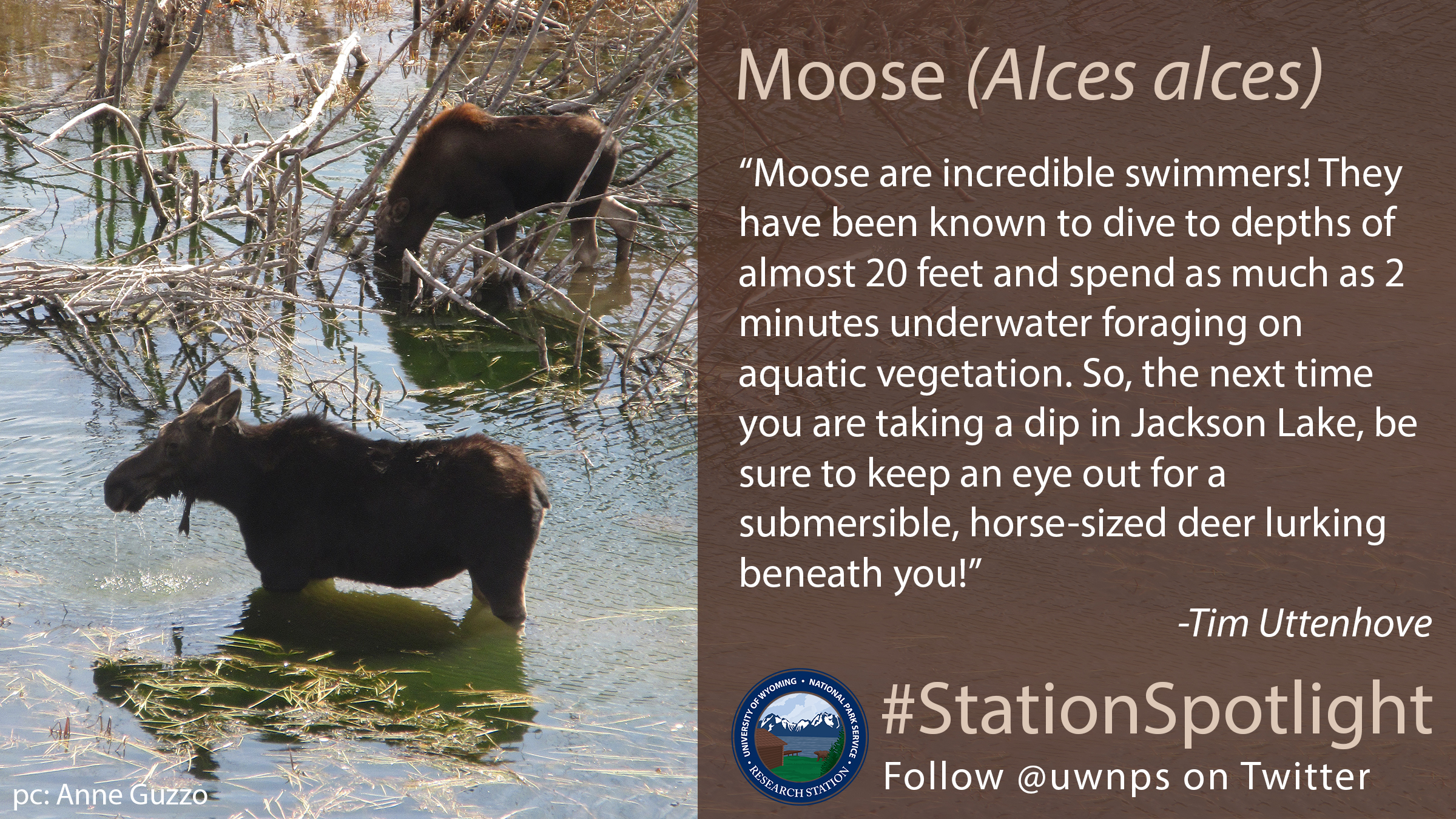
Moose (Alces alces)
Eurasian elk, more commonly referred to as moose in North America, are large members of the deer family found in boreal forests of the northern hemisphere from Canada to Russia and down into the Rocky Mountains. As the largest member of the family Cervidae, moose are comparable in size to horses, standing up to 7.5 feet tall at the shoulders. Like most other members of the deer family, the males sport impressive, paddle-shaped antlers for much of the year that they use to fight for the affection of females. These antlers can have a spread of up to 6 feet across and weigh as much as 75 pounds! The range of the moose is primarily limited by forage and snow depth. Moose are known as browsers; they forage on shrubs, trees, and other broad-leafed plants, preferring early succession stage forests after a fire or logging with an abundance of forage sprouting up. A favorite food of moose in the park is willow trees, so if you want to see a moose, explore riparian areas along the river and marshy expanses in mountain meadows.
Moose are incredible swimmers! They have been known to dive to depths of almost 20 feet and spend as much as 2 minutes underwater foraging on aquatic vegetation. So, the next time you are taking a dip in Jackson Lake, be sure to keep an eye out for a submersible, horse-sized deer lurking beneath you! Learn more about these colossal cervids here.
Written by Tim Uttenhove
PC: Anne Guzzo
